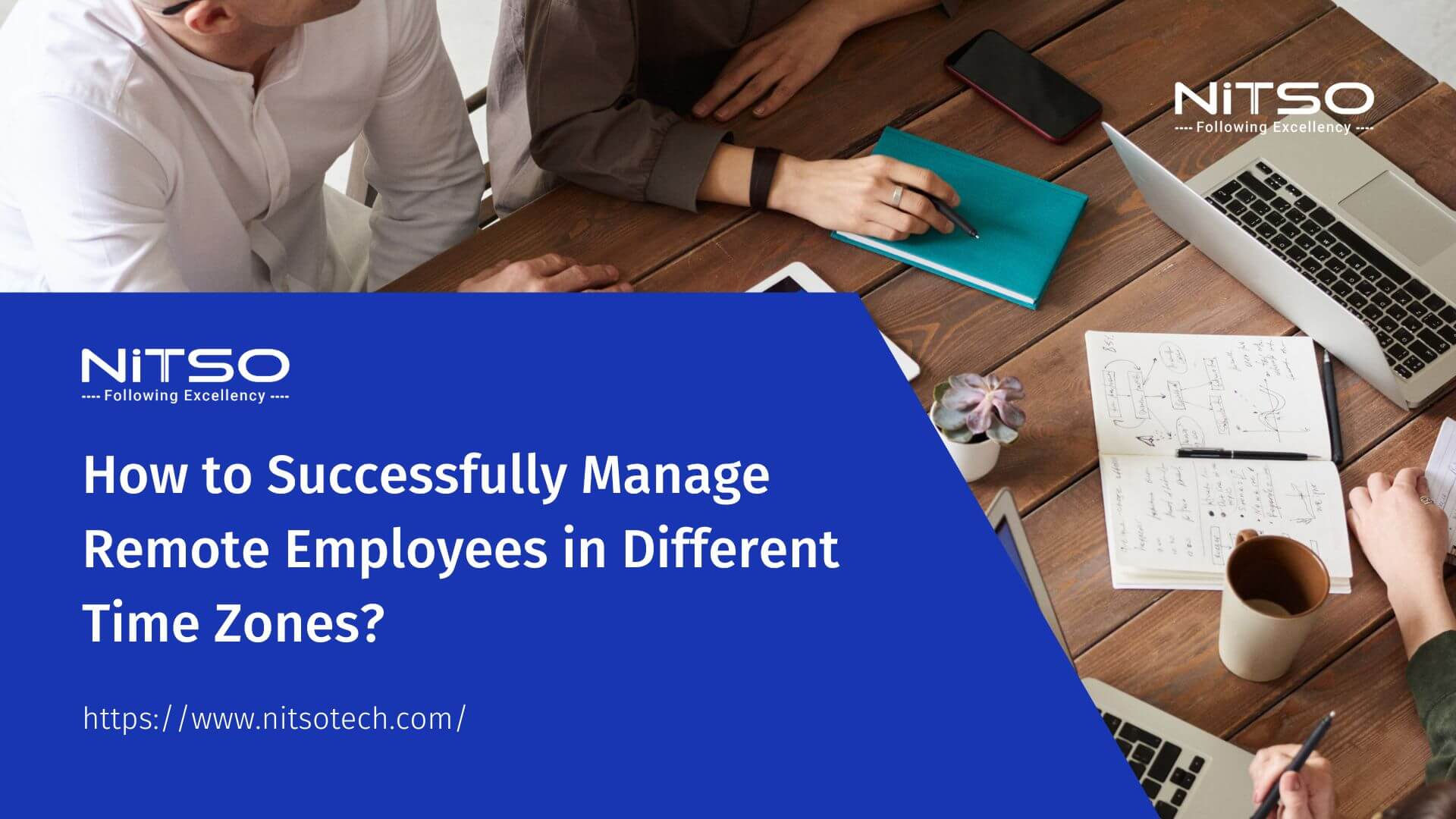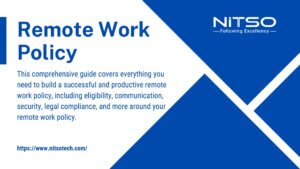Content On This Page
In today’s globalized world, it is increasingly common for companies to have employees working across different time zones. While this provides greater access to talent and the ability to operate 24/7, managing employees working in different time zones comes with its own set of challenges.
For Indian companies in particular, having employees in multiple global locations separated by several hours is a key reality. As outsourcing and offshore teams continue to be leveraged, Indian managers often oversee team members based remotely in significantly different time zones.
Effectively managing employees working in different time zones requires paying close attention to communication, collaboration, productivity and workflow management. It demands an understanding of the time zone differences and making adjustments to bridge the gaps that arise. Success lies in implementing strategies that foster team unity despite the remote work arrangement.
With the right structures and guidelines in place, the challenges of managing employees in different time zones can be overcome. The keys are flexibility, cultural sensitivity, leveraging technology and keeping an open channel of communication across all locations. With time zone differences no longer being an obstacle, Indian companies can build productive global teams and realize the full benefits of a distributed workforce.
This comprehensive guide delves into the various aspects of managing employees working in different time zones from an Indian manager’s perspective. It provides tips and best practices tailored for Indian companies to help smooth out the wrinkles that arise due to remote team members spread across the globe.
How to Manage Global Teams Working in Different Time Zones
1. Understand the Time Zone Differences
The first key step is gaining a clear understanding of the different time zones your employees are distributed across and how they differ from yours. For Indian companies, some of the most common time zones teams may be located in include:
- IST (India)
- PST (USA West Coast) – 9.5 hours behind
- EST (USA East Coast) – 10.5 hours behind
- GMT (UK) – 4.5 hours behind
- CET (Central Europe) – 3.5 hours behind
- AEDT (Australia) – 2.5 hours ahead
Having a visualized world clock or map that shows the time zone differences can help provide better clarity. There are many online tools and apps that allow you to input multiple locations and will display the relative times side by side. This gives you an at-a-glance view of the time overlaps and gaps.
When communicating time to remote employees, it is important to be clear about specifying whether you are referring to their local time or your own. Confusion can arise if time details are not explicitly stated along with the relevant time zone. Developing an intuitive understanding of the commonly overlapping or non-overlapping working hours will help smooth coordination and scheduling.
Tracking time zone differences diligently right from the start helps Indian managers better comprehend the logistical challenges. With experience, the gaps become easier to mentally account for when interacting with each location. Being cognizant of time zones is the first step to effectively managing employees spread far and wide.
2. Communication Best Practices
Communication is key to managing employees in different time zones. With remote teams, constant communication is crucial to ensure everyone is on the same page.
Indian managers should establish a regular cadence for team-wide meetings and check-ins. Daily stand-ups at a fixed time overlapping for all locations work well. Scheduling one-on-one meetings with direct reports during mutually suitable hours is also important.
Email, instant messaging and team chat platforms help facilitate seamless communication across time zones. Being mindful of the working hours before sending non-urgent messages can prevent disturbing employees outside their regular work times.
For discussions involving multiple time zones, carefully plan meeting times when there is maximum overlap. Using collaboration tools with video/audio conferencing and screen sharing is useful. Share meeting notes and next steps to align everyone later.
Consider leveraging asynchronous platforms like discussion forums for questions, updates and documents accessible to employees at different times. Managers can chime in when team members in their time zone are active.
3. Collaboration Tools and Technology
Leveraging the right collaboration tools and technology is essential for enabling teams in different time zones to work together seamlessly.
Indian managers should select tools that allow easy communication, file sharing, task management and project coordination across time zones. Popular tools like Slack, Trello, Asana and Miro provide these capabilities.
Video conferencing platforms like Zoom and WebEx are a must for meetings and calls with remote employees. File-sharing tools like Google Drive, Dropbox and SharePoint facilitate access to the latest documents from anywhere.
Project management systems like Asana, Jira and Trello help distribute tasks, track progress and meet deadlines across locations. Wikis and online whiteboards enable real-time collaboration.
Tools should ideally be cloud-based SaaS platforms that can be accessed from anywhere with just a browser. Mobile compatibility allows employees to collaborate on the go.
Standardizing on a core set of platforms across the organization brings uniformity. Managers should ensure team members in all locations are trained and enabled to use the tools optimally.
The right collaboration suite makes it easier for Indian managers to manage employees working in different time zones. Investing in the best tools lays the foundation for building an effective management of employees working in different time zones.
4. Managing Productivity and Workflows
Optimizing workflows and maintaining productivity across time zones requires diligent management from Indian managers.
Clearly defining deliverables, deadlines and accountability is crucial. Break up projects into tasks and milestones to better track progress across locations. Use project management tools to assign tasks and monitor completion.
Keep track of the working hours and capacity of team members in each time zone. Avoid overloading a particular location. Have employees update individual work logs that you can review. This can be done through employee screen monitoring software.
Build adequate overlap periods for handoffs between time zones. If needed, assign a bridge resource to facilitate the transition.
Aim for at least an hour of overlapping working time where both time zones can connect. Schedule key meetings and feedback sessions during this period.
Be flexible on work hours if needed to synchronize with other locations. Explore options like adjusting start times or allowing evening work.
Analyze recurring delays or bottlenecks across time zones. Identify inefficiencies and optimize workflows accordingly.
Closely monitoring team productivity and maintaining aligned workflows helps Indian managers enhance output across distributed teams.
Best Practices for Indian Managers
Indian managers overseeing remote teams in different time zones need to follow certain best practices to manage effectively.
- Have cultural awareness and sensitivity to differences. Don’t assume Indian norms apply elsewhere.
- Accommodate major holidays and days of religious significance in each location. Adjust expectations on such days.
- Tailor communication style and language for different audiences. Avoid culture-specific idioms and terms.
- When visiting remote offices, observe cultural etiquette on dress, greetings, customs, etc.
- Build personal connections with remote team members. Enquire about their families and interests.
- Recognize good work publicly. Appreciate team members across time zones.
- Schedule late evening calls if needed to connect directly with overseas teams when they start work.
- Actively facilitate collaboration between employees in different locations.
- Monitor the workload on Indian team members closely and prevent burnout.
- Be transparent on company policies and share big picture context with all teams regularly.
Adopting these best practices with cultural sensitivity gives Indian managers a greater ability to build trust and unity while managing employees working in different time zones.
Article you might be interested in 6 Tips to Successfully Manage Your Remote Workforce
How To Handle Challenges While You Manage Employees Working in Different Time Zones?
Managing employees working in different time zones comes with its fair share of challenges that Indian managers must handle effectively.
- Mitigate communication delays by having quick contingency discussions and pushing for faster responses.
- When delays happen, assess if the timeline needs to be adjusted and communicate the revised plan proactively.
- Implement collaboration tools and norms to minimize situations of misalignment and lack of clarity.
- Coach team members who are not responsive during their working hours and emphasize timeliness.
- Watch out for a decreasing sense of accountability and ownership with remote working.
- Proactively identify potential conflicts between teams in different time zones and mediate as needed.
- Track productivity data across locations to quickly identify underperformance and take corrective actions.
- Conduct skip-level meetings with remote teams to surface any issues that may be getting filtered.
- Make an extra effort to engage and motivate remote teams so they feel valued despite the distance.
- Visit remote office locations periodically to reinforce connections.
Anticipating and addressing such challenges proactively, while maintaining close engagement across time zones, enables Indian managers to handle issues smoothly as they arise.
Article you might be interested in Best Practices for Tracking and Managing Employee Time Off
Key Takeaway
In conclusion, effectively managing employees working in different time zones requires Indian managers to implement a variety of strategies.
Following a structured approach to communication, collaboration, productivity and relationship building is key. Leverage the right tools and technologies while maintaining sensitivity to diverse cultures.
Promote transparency, accountability and engagement across remote teams. Continuously optimize processes focusing on time zone handoffs and workflows.
Building flexibility to bridge time gaps and align schedules is crucial. Developing a cohesive and inclusive team culture across locations provides unity.
Managing employees in different time zones has its fair share of logistical challenges but can be extremely rewarding. Embracing diversity brings access to talent and global perspectives.
By paying attention to the human element and not just workflows, Indian managers can overcome geographical divides. With the right structures in place, distributed teams across time zones can thrive and exceed expectations.








0 Comments